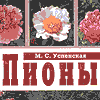origination:
LEDA (Queen of Sparta, mother of Castor and Pollux) (D-308), Nassos Daphnis, Oct. 17.1977. First bloomed 1974. Parentage. Generation - BC-3; J-11 (Kokamon) x BC-2. Pink with red streaks going through each petal. Single. Two rows of petals, well formed and rounded. The flower is very big, like any Moutan. Opens fully and exposes its center well. Flares are dark, which gives it a mysterious feeling. Strain: ¾ Moutan, ¼ Lutea. Has pollen and seeds. Fragrant. Good stem strength. Reliable. Good substance. Strong foliage. Bulletin #224.
Osti (1997) /
Osti (1999)
LEDA (NASSOS DAPHNIS, 1977). Fiore doppio, porpora, con vistoso centro di stami gialli, macchie scure all'unghia e petali arricciati, ma disposti in modo ordinato, a forma di camelia. Di vigoroso sviluppo.
LEDA Raised by Nassos Daphnis in 1997. Flowers: mauvish red, dark blotches at the base of the petals; double, petals regularly arranged and very wavy, showy centre of yellow stamens, camellia form. Habit: vigorous.
LEDA A truly gorgeous tree peony that is just coming lo its full | potential in our garden. Large flowers of pink with a blue cast, and wine red flashes at the base of the petals. A really wonderful tree peony that is a grand addition to the connoisseur's garden.
LEDA (QUEEN OF SPARTA, MOTHER OF CASTOR AND POLLUX)
Flower type: Tree Peony—Semi-double
Plant zone(s): 4-8
Bloom time: Mid
Hybridizer: Nassos Daphnis
Striking mauve-pink petals are highlighted by deep plum colored flares which add an air of mystery to this gorgeous flower. Slight fragrance.

Leda. (Queen of Sparta, Mother of Caster & Pollux) Daphnis. 1977. Advanced generation lutea hybrid. American Peony Society Gold Medal winner-2014. Pink with light red streaks going through each petal. Semi-double. Two rows of petals, well formed and rounded. Red stamens, white sheath and cream stigmas. Large and beautiful, flowers are carried outward. Plants produce woody stems, but spread outward, rather than upward. Excellent. No fertility noted, but rumor has it that seeds have been produced in Europe. (Kokoman x BC-2).
M.S. Uspenskaja 2003, p. 189:

















